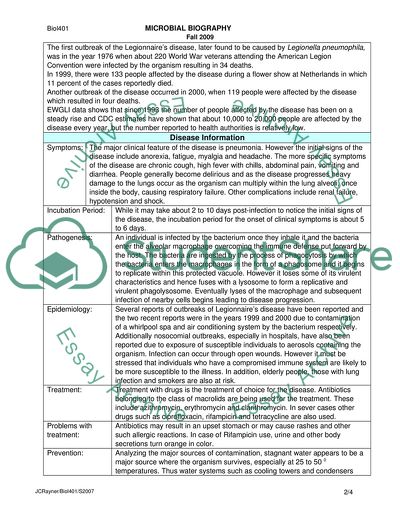Cite this document
(Bacteria Genomes- Legionella Pneumophila Report Example | Topics and Well Written Essays - 1250 words, n.d.)
Bacteria Genomes- Legionella Pneumophila Report Example | Topics and Well Written Essays - 1250 words. https://studentshare.org/biology/1729842-microbiology-biography
Bacteria Genomes- Legionella Pneumophila Report Example | Topics and Well Written Essays - 1250 words. https://studentshare.org/biology/1729842-microbiology-biography
(Bacteria Genomes- Legionella Pneumophila Report Example | Topics and Well Written Essays - 1250 Words)
Bacteria Genomes- Legionella Pneumophila Report Example | Topics and Well Written Essays - 1250 Words. https://studentshare.org/biology/1729842-microbiology-biography.
Bacteria Genomes- Legionella Pneumophila Report Example | Topics and Well Written Essays - 1250 Words. https://studentshare.org/biology/1729842-microbiology-biography.
“Bacteria Genomes- Legionella Pneumophila Report Example | Topics and Well Written Essays - 1250 Words”. https://studentshare.org/biology/1729842-microbiology-biography.


